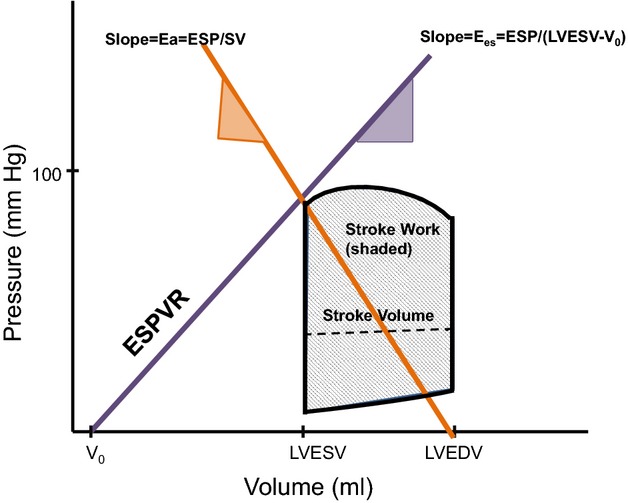Figure 1.

Schematic description of these measures of myocardial mechanics. The purple line denotes the end systolic pressure volume relationship (ESPVR), and the Ees represents the slope of the ESPVR. ESP denotes end-systolic pressure, and Eessb represents the noninvasively derived single-beat estimation of Ees. LVEDV is the end-diastolic volume, and LVESV is the end-systolic volume. V0 is the volume intercept of the ESPVR at an end-systolic pressure of 0 mm Hg. Ea represents the negative slope joining the end-systolic pressure-volume point to the point on the volume axis at end-diastole with this line denoted in orange. Stroke work is represented by the gray shaded region of the pressure-volume area. The dashed line within this region is the stroke volume (SV), or the difference between the LVEDV and LVESV. Ea indicates effective arterial elastance; LVEDV, left ventricular end-diastolic volume; LVESV, left ventricular end-systolic volume; SV, stroke volume; V0, volume intercept.
